Controlling NVL-mode Sentence Pacing in Ren'Py
When you are making a visual novel or other kind of game based on large amounts of text, one aspect that is largely out of your control is how quickly a player reads. However, with Ren’Py, you have a tool at your disposal that can help a lot.
In ADV mode, this isn’t a huge consideration. Because your writing will likely be dialogue-based, and the text box has limited space, you will default to showing one short, digestible line at a time.
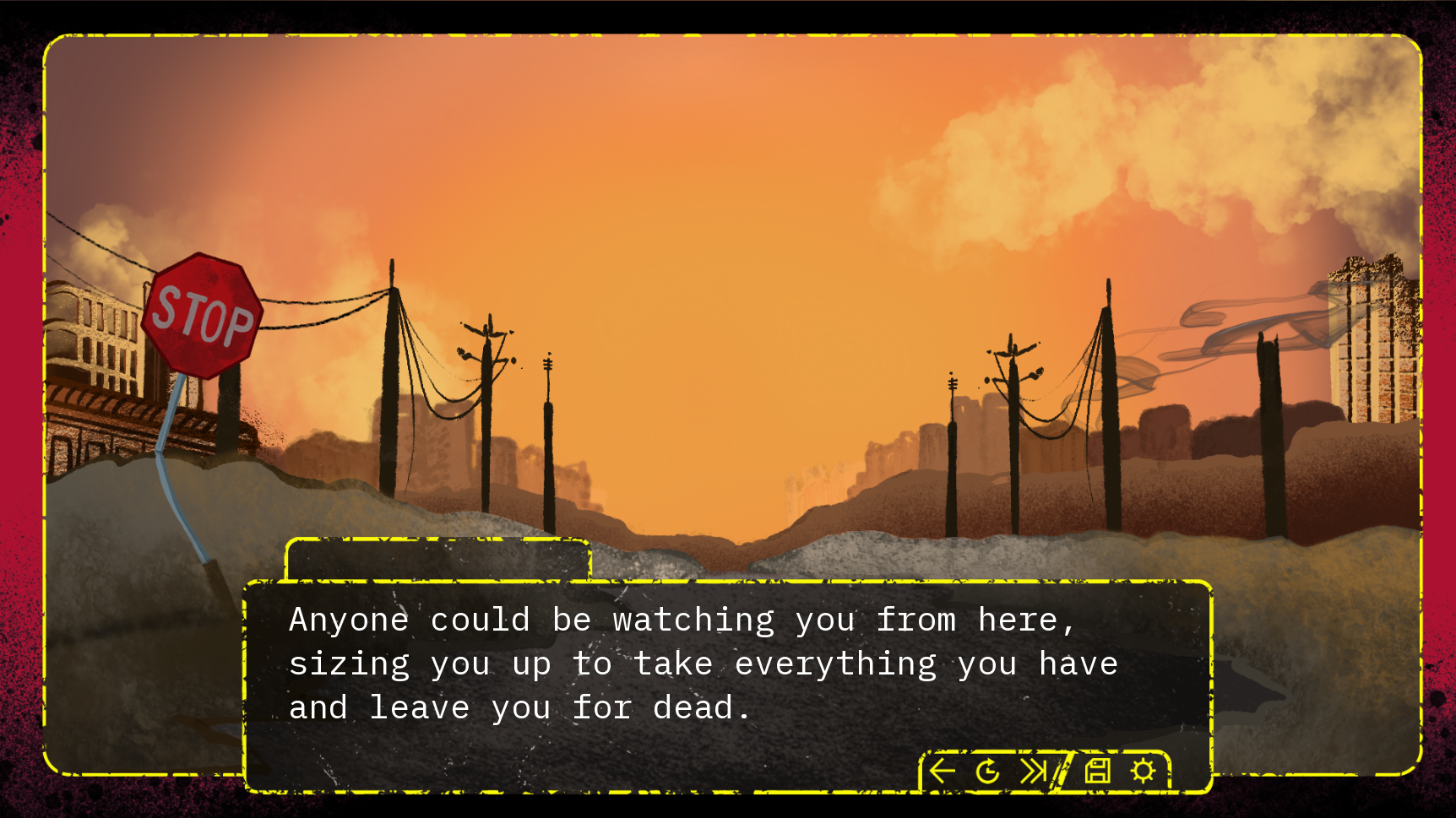
A screenshot from my other visual novel, DESERT OF ASH: a Post-Apocalyptic Gay Sex Simulator, which uses ADV mode.
But in NVL mode, when you write a paragraph into Ren’Py without any alteration, that entire paragraph will appear at once. Depending on your writing style, that can be a big chunk of text dropped on the reader. You can break it up, making each line its own paragraph, but then why use NVL mode in the first place? The point is to make something that feels closer to reading a novel.
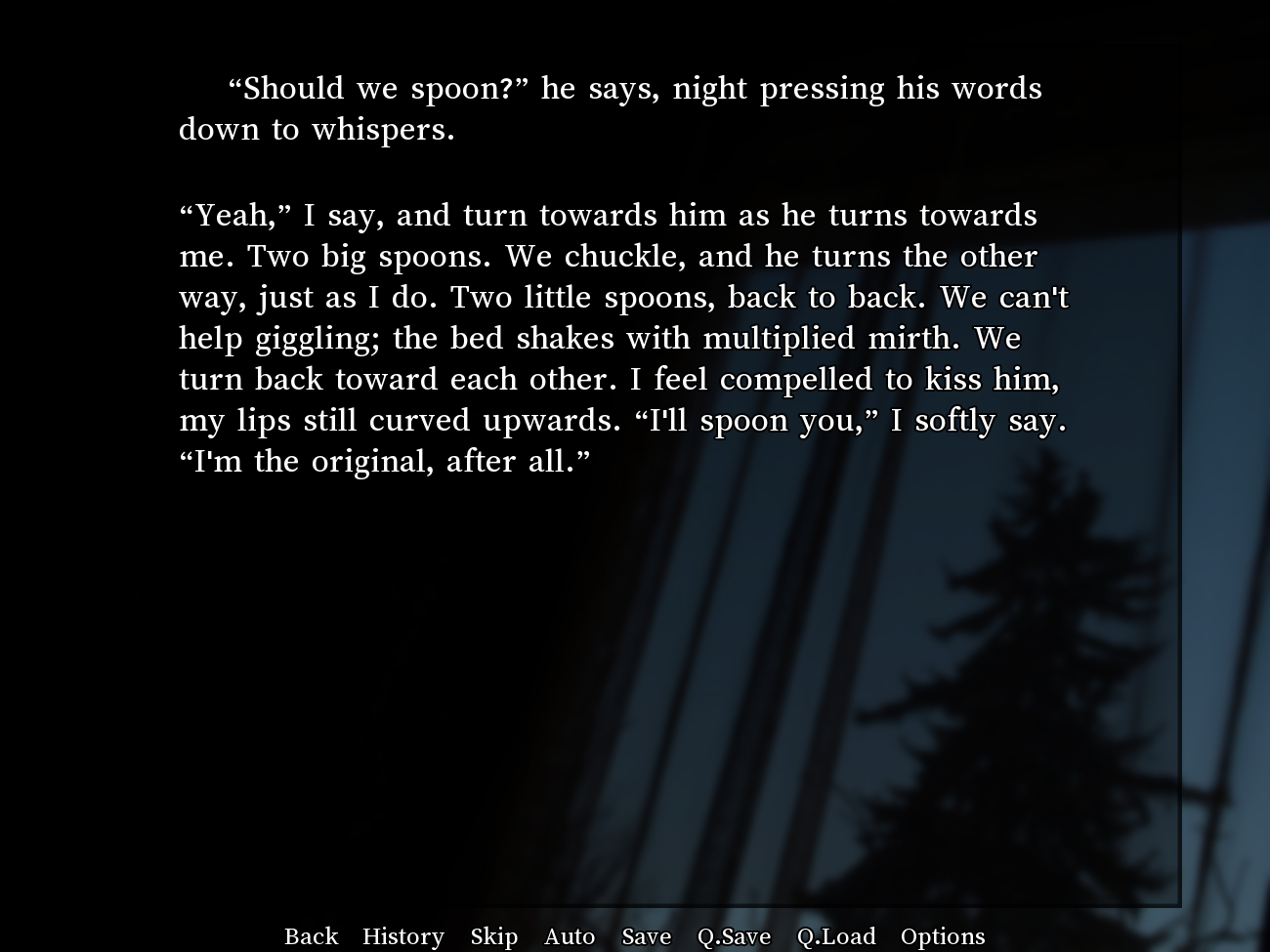
That second paragraph might be a lot to drop on the reader at once.
Enter {w}. By including {w} in your code, the engine will stop at that point until the player clicks again to continue. This way you have as much control over pacing as you want.
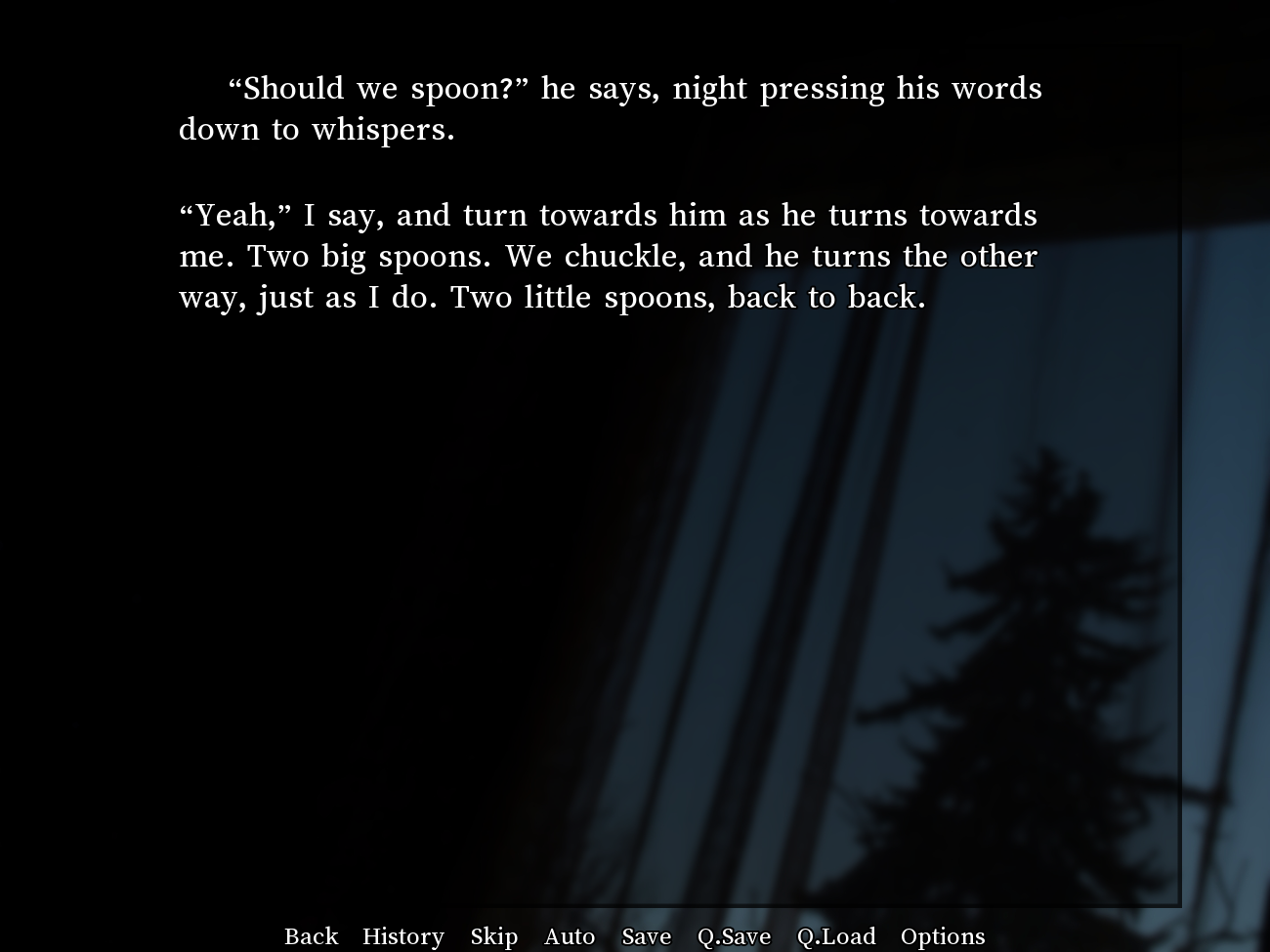
With {w}, you can break up a long paragraph for the reader without using line breaks.
It’s important not to go overboard. While I was writing His Own Being, I found that the most natural way to use {w} was at the end of each sentence. One sentence, click, another sentence, click, another sentence. While you have the freedom to use {w} after every comma or other natural pause, the reader may get frustrated if the reading experience is slowed down too much.
That’s not to say you have to stick to a default {w} only after every period. By establishing that as a baseline, you can then branch out to create different effects, to slow or speed up the reader at your whim.
Here’s an example where I wanted to make the reader read more quickly. After an unexplained event, the protagonist thinks through what just happened. Many of these sentences are his questions to himself, short inquisitive fragments, and I use {w} to halt the reader after each one, to consider them as the protagonist does. But there are also multiple points where I refrain from using {w} in order to show two sentences without pause, to make the reader take in both at once, as if they were a single sentence. This stop-and-start pacing reflects the protagonist’s confused thought process as he runs through possible explanations.
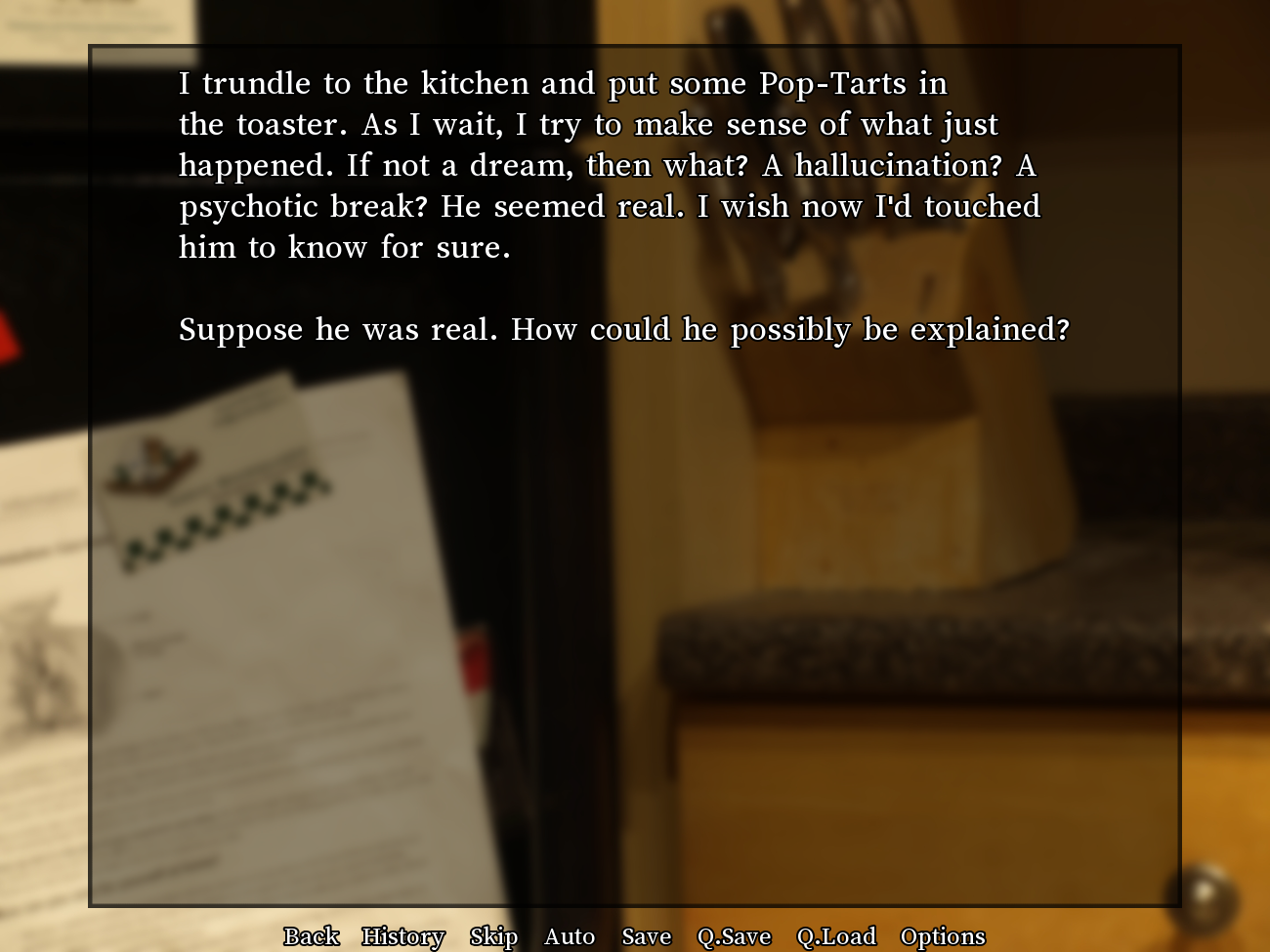
The protagonist works through his thoughts in an erratic manner, reflected by how sentences unfold via {w}.
Another example, this time of slowing the reader down. Here, the protagonist goes on social media to see what’s being said about current events. One sentence lists the kinds of things he sees, and I could have just put {w} at the end of the sentence and left it at that. If I had, the reader would consider each of these list items together. Instead, I put {w} after each item alongside a comma. The reader must click after each one, forcing them to take them all in individually. This gives each item more impact than if they were all bundled together in the reader’s mind.
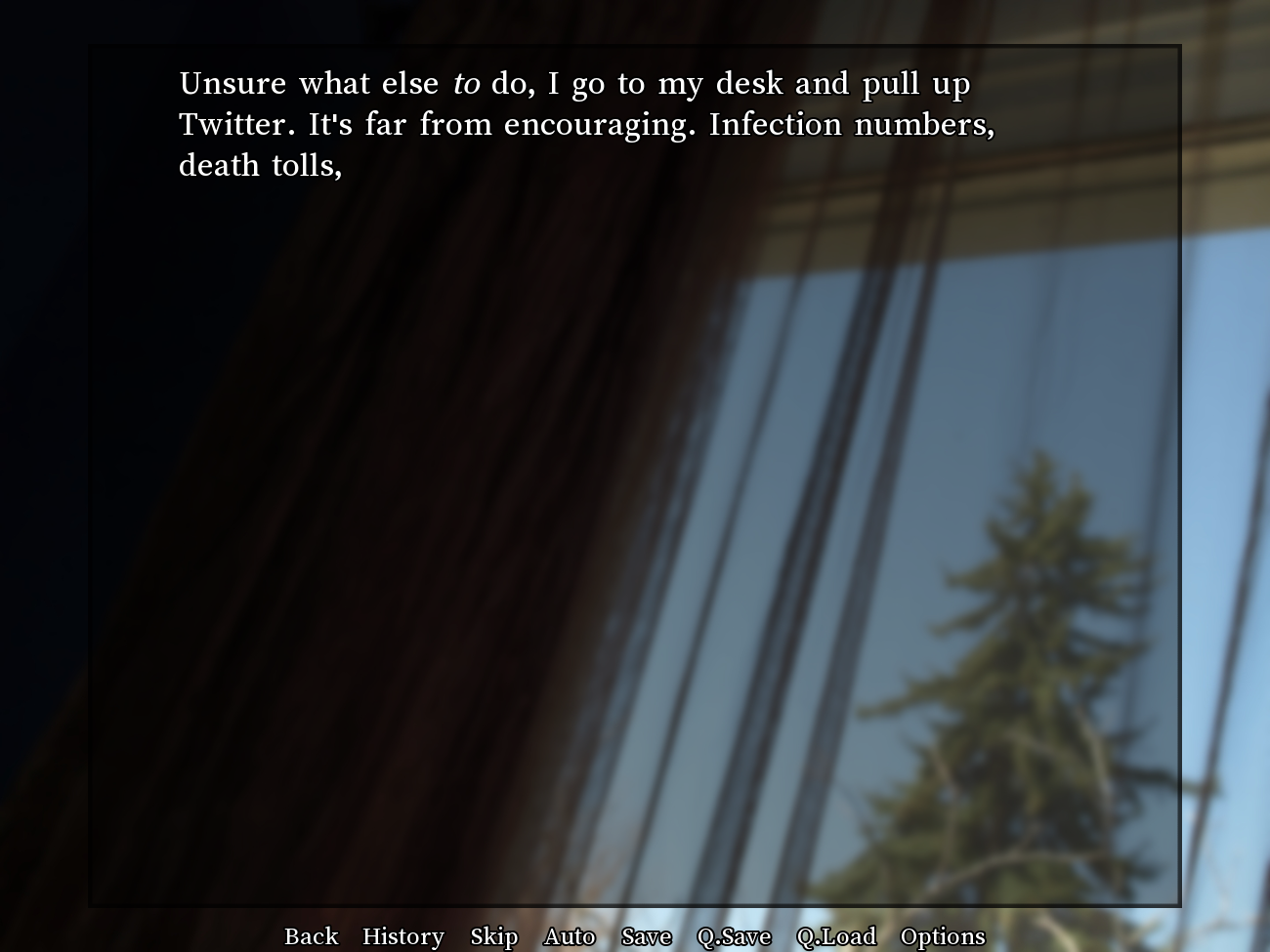
Each list item must be taken on its own for maximum impact.
Refrain from using {w} to speed the reader along; or use {w} liberally to make them soak in a moment, take in stimuli, or consider something more carefully. Either way, you have more control over reading pace than you might think.
Get His Own Being
His Own Being
No matter what happens, I was here.
| Status | Released |
| Author | Davis G. See |
| Genre | Visual Novel |
| Tags | Erotic, Experimental, Gay, Kinetic Novel, lonely, personal, photographs, Queer, Short, Slice Of Life |
| Languages | English |
| Accessibility | One button |
More posts
- Community Copies Now Available!30 days ago
- The Patch Where I Put It All Out ThereJul 09, 2025

Leave a comment
Log in with itch.io to leave a comment.